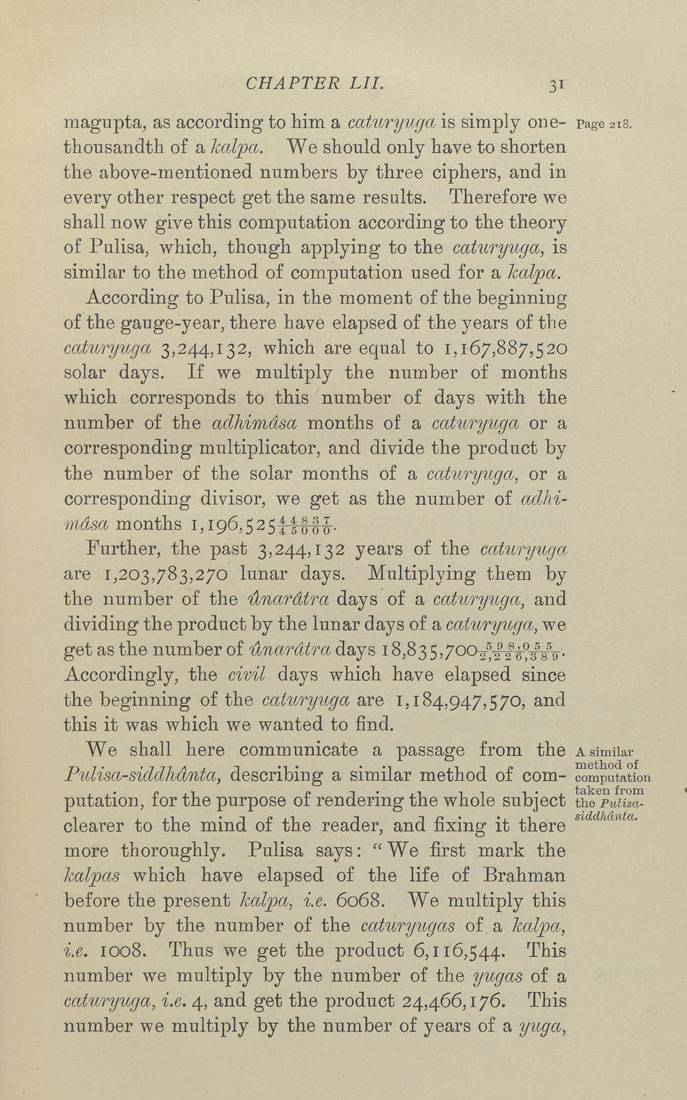CHAPTER LII. 31
magupta, as according to him a caturyuga, is simply one- page 218.
thousandth of a kcdpa,. We should only have to shorten
the above-mentioned numbers by three ciphers, and in
every other respect get the same results. Therefore we
shall now give this computation according to the theory
of Pulisa, which, though applying to the caturyuga, is
similar to the method of computation used for a kalpa.
According to Pulisa, in the moment of the beginning
of the gauge-year, there have elapsed of the years of the
ccduryuga 3,244,132, which are equal to 1,167,887,520
solar days. If we multiply the number of months
which corresponds to this number of days with the
number of the adhimdsa months of a caturyuga or a
corresponding multiplicator, and divide the product by
the number of the solar months of a ccduryuga, or a
corresponding divisor, we get as the number of adhi¬
mdsa maxAhs, 1,196,52511^^-^-.
Further, the past 3,244,132 years of the ccduryuga
are 1,203,783,270 lunar days. Multiplying them by
the number of the "dnardtra days of a caturyuga, and
dividing the product by the lunar days of a caturyuga, we
get as the number of Unardtra days i8,835,700-2^'^^f^-^^V-
Accordingly, the civil days which have elapsed since
the beginning of the caturyuga are 1,184,947,570, and
this it was which we wanted to find.
We shall here communicate a passage from the a similar
Pulisa-siddhdnta, describing a similar method of com- computation
putation, for the purpose of rendering the whole subject ^Q^puUm-
1 j_j_i •Ti"j_i 1 ~\ n • 'j^ji siddhdnta.
clearer to the mmd of the reader, and nxmg it there
more thoroughly. Pulisa says: " We first mark the
kalpas which have elapsed of the life of Brahman
before the present kalpa, i.e. 6068. We multiply this
number by the number of the caturyugas of a kalpa,
i.e. 1008. Thus we get the product 6,116,544. This
number we multiply by the number of the yugas of a
caturyuga, i.e. 4, and get the product 24,466, i y6. This
number we multiply by the number of years of a yugco,
|








